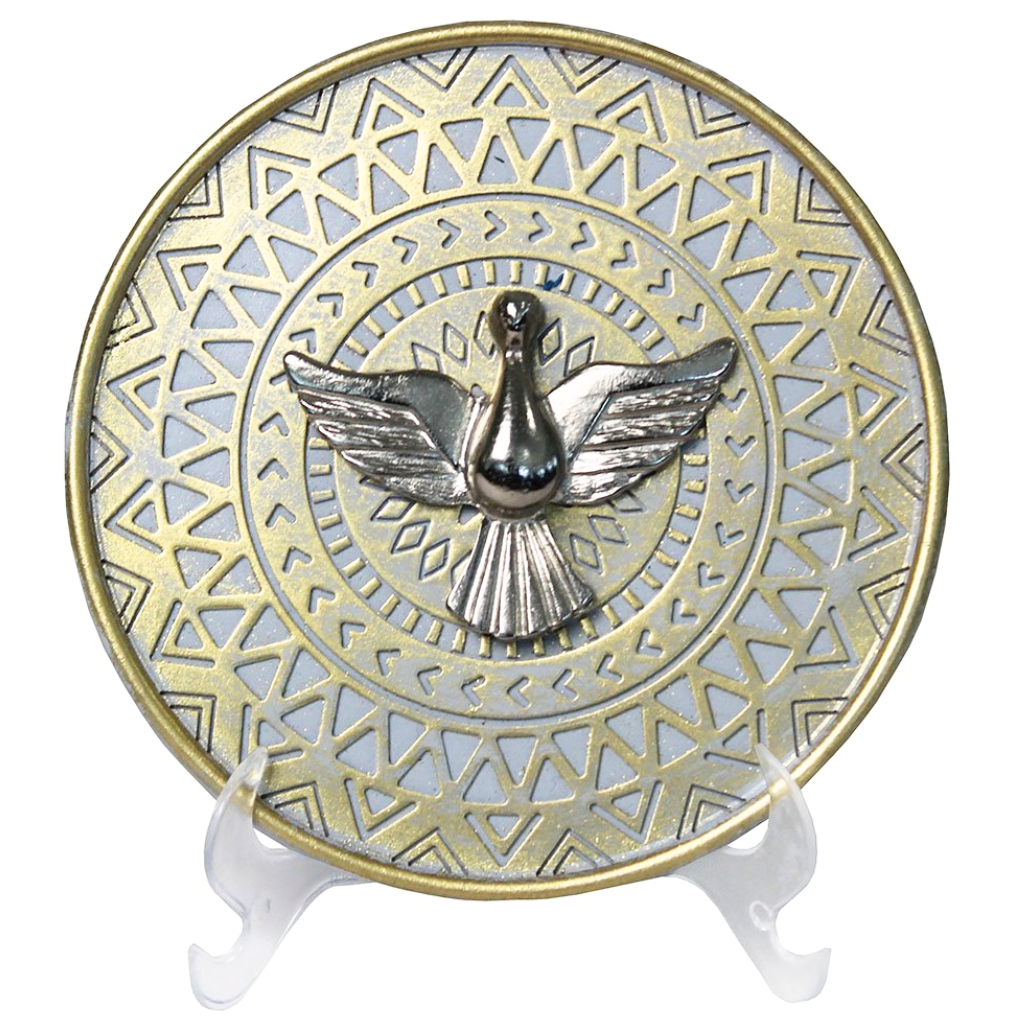Divine Holy Spirit Tabletop Image in Metal and National Resin
Divine Holy Spirit Tabletop Image in Metal and National Resin is backordered and will ship as soon as it is back in stock.

Approximate measurements: 10 cm high, 10 cm wide and 1.5 cm long.
Weight: 95g.
History of the Holy Spirit
The Divine Holy Spirit or simply "Divine" is the Third Person of the Holy Trinity. He is God. He is the love between the Father and the Son personified, alive and active. He is the one who comes to live in our hearts through baptism and who guides those who believe in Jesus Christ on the path to salvation. The Bible uses symbolic images to represent Him, such as Fire, Breath, Wind, Living Water and the symbol of the dove. Let's learn about the origin of this symbol.
The dove symbol of the Divine Holy Spirit
The representation of the Holy Spirit as a dove comes from the New Testament. More explicitly from the occasion of Jesus' baptism. In this passage, the Holy Spirit "appeared in bodily form like a dove, and a voice came from heaven saying: This is my beloved Son, in whom I am well pleased." The four Gospels report the fact. The texts are in: Matthew 3:16; Mark 1:10; Luke 3:22; John 1:32. That is why the dove is used to represent the Holy Spirit.
The three-rayed halo
In some representations of the Holy Spirit, there is a halo of three rays coming out of the dove's head. This symbol signifies that the Holy Spirit is part of the Holy Trinity. Note that in the passage of Jesus' baptism quoted above, we have the Father, the Son, and the Holy Spirit all manifesting themselves together and revealing themselves as the Trinity to humanity.
The Dove in the Old Testament
In the Old Testament, the dove appears as a symbol of God's peace and forgiveness, as we see in Genesis 8:8-12: the dove released by Noah returns to the ark carrying an olive branch, announcing that the flood waters had receded and that the earth was once again habitable for human beings.
Nenhuma especificação disponível para este produto.


